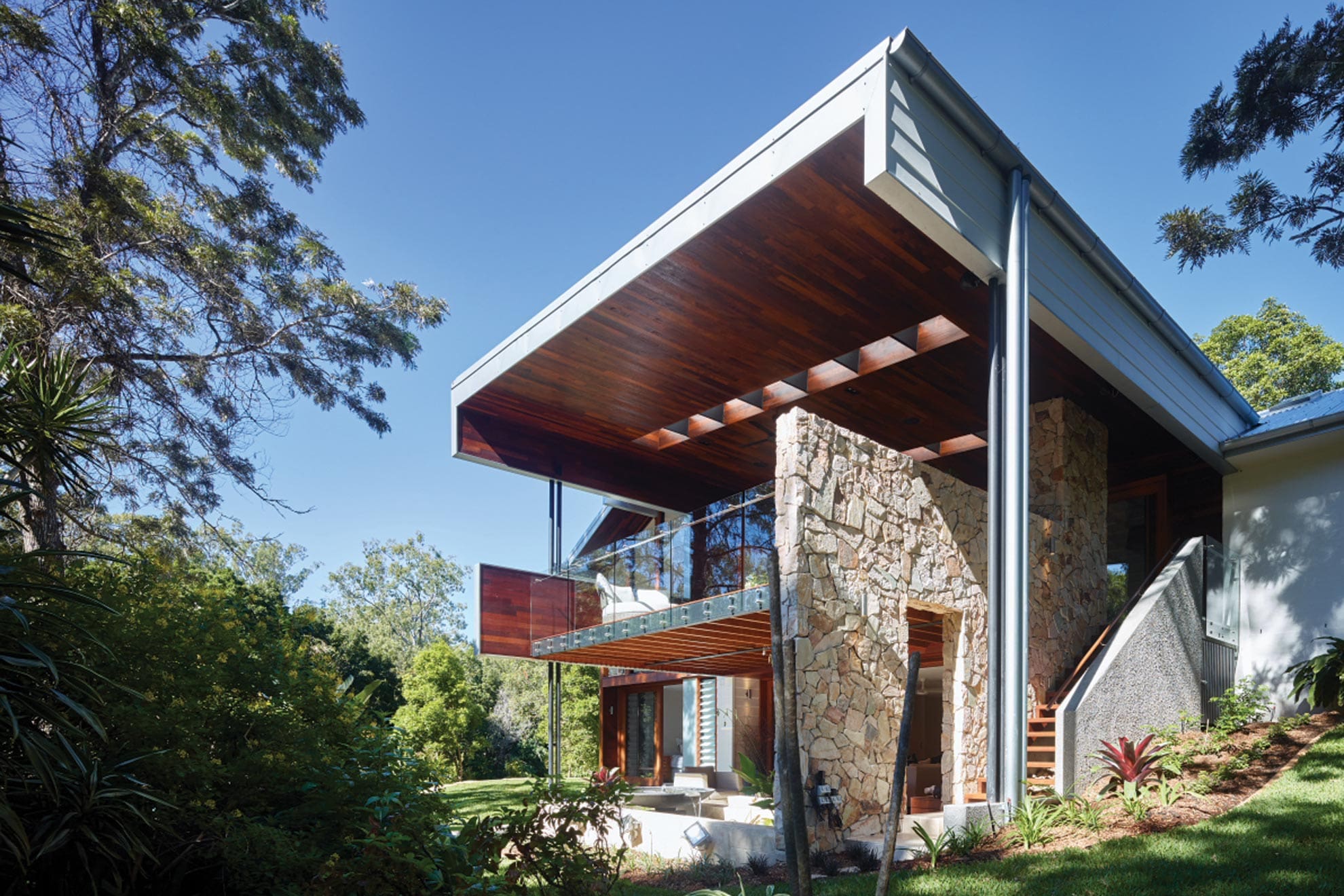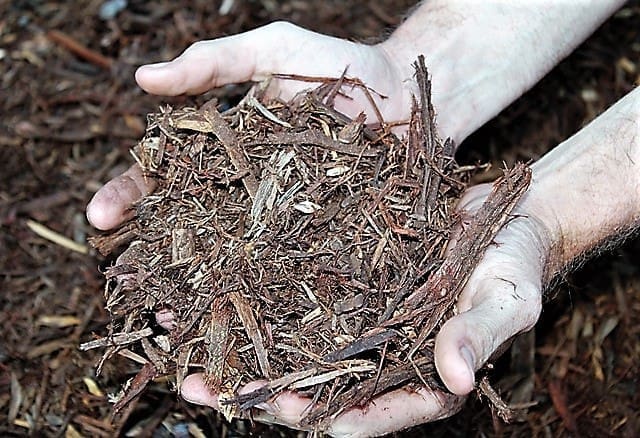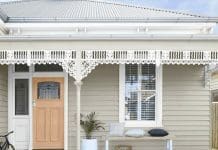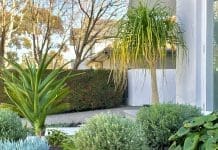With the weather quickly cooling down, the last thing on your mind might be stepping out to do some gardening but there are a stack of Autumn projects you could do, including mulching your garden.
Today we have James Macpherson, a Consulting Arborist and owner of Gold Leaf Tree Services, with us to share how to choose the right mulch for your garden.
Related article: 5 step guide: How to choose the right trees for your garden
Related article: Top 20 plants for your courtyard: Plants that love living in pots
Words by James Macpherson
We don’t generally think of mulch as a material that can enhance the design of our home, right?!
Mostly we think of it as ground cover for our garden, covering up dirt and surrounding our plants. But mulch can be a beautiful feature for your home, adding texture and colours to the design of your garden.
Good mulch is full of rich organic matter and is a food source for your plants keeping them healthy and alive for longer. It’s also a great way to keep the temperature of your soil more consistent — ideal to do before extreme cold (to insulate) or hot weather (to retain moisture).
We’ve put together some tips on selecting the right mulch for your garden so you get a gorgeous natural look plus the right nutrients for your plants.

1. Go natural
The most valuable mulch is called ‘organic’ or ‘forest litter’. It gives you a beautiful soft and varied texture and deep brown colours to complement your natural setting.
Adding new mulch to your garden is one of the quickest and most affordable ways to boost your home’s curb appeal — and your plants will love it.
Organic mulch is made from recycled local product including wood, soil and leaves which break down to make your soil nutrient-rich. Your trees will look and feel a million bucks. It also helps with water retention and reduces weed growth and plant stress.
Added bonus! It’s usually the cheapest mulch because there’s no added products and labour.

2. Avoid the carpark look
Don’t risk taking away the beauty of your home design and landscape by using red, blue or black dyed mulch. This type of mulch is hard wood chips with added colourants. You’ll find this type of mulch in carparks because they provide dense ground cover which prevent weeds but give no nutrients to the garden. In fact, the cover can be so dense that water can’t get to the soil. Mulch with nasty chemicals can also harm your plants and the creatures that live in your soil.
3. For the kids
If you’re using mulch in a play area, you might like to use tan bark. We all remember this from under the monkey bars at the school playground. It provides a softer fall than hard wood chips and isn’t as messy as organic mulch when the kids are rolling around in it. There are regulations for how this mulch is made so check with your landscape supplier that it’s playground certified.
This type of mulch also won’t get too hot underfoot. Unlike school playgrounds that generally have a large canopy or shade sail like the ones from Greenline, at home play areas are often exposed to the full sun.

4. A nice even spread
Spread your mulch nice and evenly across your garden — around 100mm thick. When you get to your plants or trees, leave space around the trunk. Don’t pile mulch around the trunk because it can cause collar rot. In a few years, you’ll need to top your mulch up because it will have broken down to feed your soil.
Thanks James for these tips on how to choose the right mulch for your garden! For more landscaping inspiration, you might like to check out these 10 cosy and contained private gardens.
Find more tips for your plants and garden
About the author

James Macpherson is a Consulting Arborist and owner of Gold Leaf Tree Services. He’s passionate about strategically managing trees in our urban areas and educating people on their value to our land, health, and properties. When he’s not amongst the trees, you’ll find him with his wife (and business partner), toddler, and Aussie Bulldog Ryder.
Web: goldleaftreeservices.com.au
Facebook: facebook.com/goldleaftreeservices
This article was first published in May 2018 and continues to be updated with latest information.






